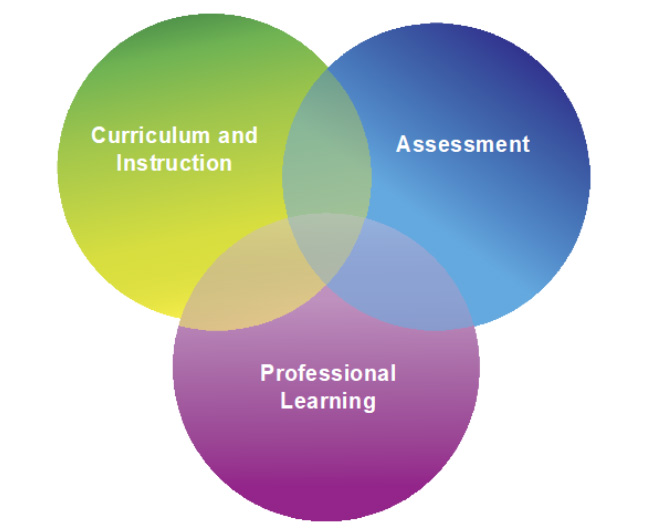The Power of Prevention
With a nod to Benjamin Franklin, let me begin by saying that an ounce of good, quality instruction to prevent reading difficulties is worth a pound of reading remediation.
There is compelling evidence that reading outcomes improve the most for students who receive instructional support and intervention in the earlier grades. In fact, there is evidence that the risk for reading disabilities such as dyslexia may be prevented or at least reduced through early identification and instruction on the critical early literacy and reading skills. Unfortunately, the latest report from the National Assessment of Educational Progress (NAEP) in 2019 reveals that 65 percent of fourth-grade students performed below the NAEP proficient reading level and 34 percent performed below the NAEP basic level on reading. It seems that we remain a long way from preventing reading difficulties.
If it is more powerful to prevent reading difficulties than to remediate them, how can we unleash the power of prevention? What are the steps we need to take? To prevent reading difficulties, we need to start early and focus on the three areas shown in the Venn diagram—curriculum and instruction, assessment, and professional learning. It is important to state at the outset that the ability to provide services and support in all three areas is necessary to prevent reading difficulties—any one by itself would be insufficient.
Necessary Components of a Prevention-Oriented Approach to Reading Difficulty

Curriculum and instruction: The past two decades of research about the acquisition of reading have provided converging evidence about not only what skills to teach but also how to teach them. The Simple View of Reading provides a framework for reading instruction that includes skills for accurate word recognition as well as skills involved in the comprehension of language. Thus, the skills critical to becoming a reader include phonological processing and phonemic awareness, phonics skills and understanding of the alphabetic principle, word reading and decoding, accuracy and fluency reading connected text, and the skills necessary for language comprehension (e.g., vocabulary, morphology, syntax). As described by Dr. Louisa Moats (2020), “Teaching reading is rocket science” and effective classroom instruction focused on the effective teaching of the essential early literacy and reading skills is at the core of preventing reading difficulties.
Assessment: One might ask if, in the best of all possible worlds, we provided effective curriculum and instruction to all students, would we really need assessment? To address this issue, I will harken back to two of my mentors in the field of early assessment, whose work in this area provided the foundation for my own work and which holds as true today as it did then. The first is Dr. Stanley Deno, the founder (along with his team at the Institute for Learning Disabilities at the University of Minnesota in the 1970s-1980s) of curriculum-based measurement (CBM). Central to Dr. Deno’s work is the notion that even effective research-based instruction that is delivered well will not work equally well for all students. Regarding educational assessment, Dr. Deno makes the point that the problem is not that we collect too few data in education, but rather the wrong data. What is needed, Dr. Deno stated, are reliable and valid assessments that can be used efficiently over time to provide data to document the effectiveness of instruction and intervention. This is imperative if we are to truly prevent reading disabilities.
Providing a similar perspective, Dr. Diane Bricker, a pioneer in the field of early intervention, has long put forth the notion that assessment should determine the format of intervention for individual children as well as assess the impact of intervention on individuals and groups of children. In an early paper, she termed assessment and intervention “the inseparable mix” and stated that assessment serves several functions including: a) guiding the differentiation of instruction for individual children b) providing feedback about the success of instruction and intervention for individual children c) providing a system for determining the value of instructional or intervention programs for groups of children.
The early tenets of the work of Drs. Deno and Bricker have been supported and expanded upon by numerous practitioners, researchers, and policy makers during the past several decades leading to the development of a wide array of reliable and valid assessment tools, appropriate for different ages and grade levels, that can be used for data-based decision making. Such assessment tools are integral to systemwide approaches to service delivery such as RTI and MTSS.
Within a prevention-oriented approach, periodic and ongoing assessment is used to:
- Identify students who are struggling to acquire the essential early literacy and reading skills early and quickly, before reading difficulties develop
- Identify skills and areas in need for intervention for individuals and groups of students
- Periodically assess all students to monitor growth in early literacy and reading skills
- Monitor progress of students receiving intervention more frequently to determine the effectiveness of the intervention being provided
- Use the data to modify instruction and/or intervention as needed
- Review outcomes for individual students and at the systems level
The bottom line is that a system of periodic and ongoing assessment is critical to a preventive approach. As teachers provide research-based curricula and instruction, it is important to know what is working for which students. Even more important, if an instruction or intervention is not working, it is imperative to use the data to do something different for that student! (For a description of how to use data for these purposes, see Acadience Learning 2022 and Powell-Smith, 2021.)
Professional Learning: Although it is clear that research-based curriculum and instruction and assessment tools are integral to a prevention-oriented approach to reading difficulties, there are many teachers who may not have received adequate teacher preparation in these areas in their preservice training. To effectively implement research-based instructional and assessment practices into the classroom, teachers need to know and understand:
- How early literacy and reading develops
- What the essential early literacy and reading skills are
- Effective instructional strategies for teaching the essential skills
- How to assess the essential skills for the assessment purposes described above
- How to interpret and use the data for instructional decision making for individuals, and groups and at the systems level
Teacher’s knowledge about the development of reading and how to teach the essential early literacy and reading skills as well as understanding of how to link data to reading instruction has been found to be related to literacy outcomes of students. Thus, teachers need to have knowledge and skills in all of these areas. If, for example, teachers understand how to assess the essential skills but not how to interpret and use the data, prevention will not work. If they understand how to assess the skills and use the data, but do not understand how to effectively teach the skills, prevention will not work. Additionally, there is evidence that the greatest impact of professional development is found when services are multifaceted and include strategies such as coaching, mentoring, and/or participating in collaborative study and communities of practice in addition to traditional in-service training workshops.
A large body of scientific evidence during the past 30 years points to what is possible to prevent or greatly reduce reading difficulties. We have the knowledge and tools to teach the essential skills and to assess student’s progress toward goals and evaluate the effectiveness of our instruction. The power of prevention to change outcomes for students and schools is achievable if we join forces across disciplines and support educators to implement the instructional and assessment practices that will make a difference.
I’ll be talking about this subject in more depth during two upcoming events. I’ll be presenting a webinar on this topic July 20, called “The Power of Prevention: The Critical Need for Assessment.” On August 4, I will be the guest on the EDVIEW360 podcast. I hope you’ll join me!
References and Resources
Acadience Learning (2022). Dyslexia Screening and the use of Acadience Reading. https://www.voyagersopris.com/resources/dyslexia-screening-and-the-use-of-acadience-reading-k-6/
Bricker, D., & Littman, D. (1982). Intervention and evaluation: The inseparable mix. Topics in Early Childhood Special Education, 1(4), 23–33. https://doi.org/10.1177/027112148200100407
Connor, C.M., Alberto, P.A., Compton, D.L., O’Connor, R.E. (2014). Improving Reading Outcomes for Students with or at Risk for Reading Disabilities: A Synthesis of the Contributions from the Institute of Education Sciences Research Centers (NCSER 2014-3000). Washington, DC: National Center for Special Education Research, Institute of Education Sciences, U.S. Department of Education. This report is available on the IES website at http://ies.ed.gov.
Deno, S.L. (1986). Formative evaluation of individual student programs: A new role for school psychologists. School Psychology Review, 3, 358-374.
Kaminski, R. (2021). Screening for dyslexia: Not a “one-and-done” event. https://www.voyagersopris.com/blog/edview360/2021/10/05/screening-for-dyslexia-not-a-one-and-done-event-by-dr.-ruth-kaminski-acadience-learning?utm_campaign=Oktopost-2021+VSL%3A+Podcasts&utm_content=Oktopost-facebook&utm_medium=social&utm_source=facebook
Moats, L.C. (2020). Teaching Reading is Rocket Science: What expert teachers of reading should know and be able to do. American Educator. https://www.aft.org/ae/summer2020/moats
Powell-Smith, K.A., (2022) Aligning Assessment to meet schoolwide literacy needs. https://www.voyagersopris.com/blog/edview360/2022/02/09/aligning-assessment-to-meet-schoolwide-literacy-needs


